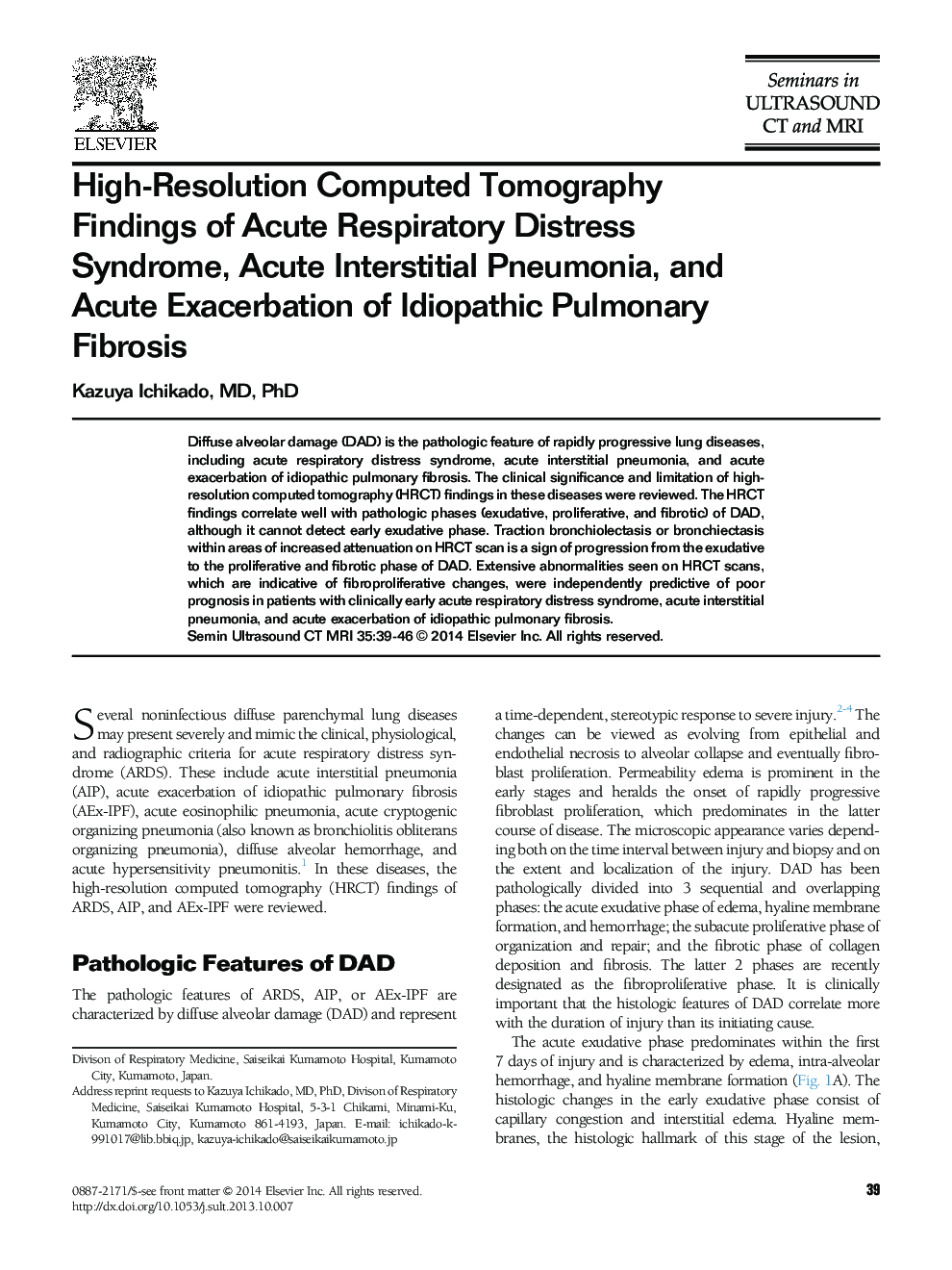| Article ID | Journal | Published Year | Pages | File Type |
|---|---|---|---|---|
| 2737596 | Seminars in Ultrasound, CT and MRI | 2014 | 8 Pages |
Diffuse alveolar damage (DAD) is the pathologic feature of rapidly progressive lung diseases, including acute respiratory distress syndrome, acute interstitial pneumonia, and acute exacerbation of idiopathic pulmonary fibrosis. The clinical significance and limitation of high-resolution computed tomography (HRCT) findings in these diseases were reviewed. The HRCT findings correlate well with pathologic phases (exudative, proliferative, and fibrotic) of DAD, although it cannot detect early exudative phase. Traction bronchiolectasis or bronchiectasis within areas of increased attenuation on HRCT scan is a sign of progression from the exudative to the proliferative and fibrotic phase of DAD. Extensive abnormalities seen on HRCT scans, which are indicative of fibroproliferative changes, were independently predictive of poor prognosis in patients with clinically early acute respiratory distress syndrome, acute interstitial pneumonia, and acute exacerbation of idiopathic pulmonary fibrosis.
